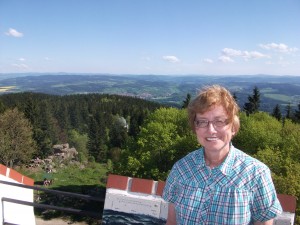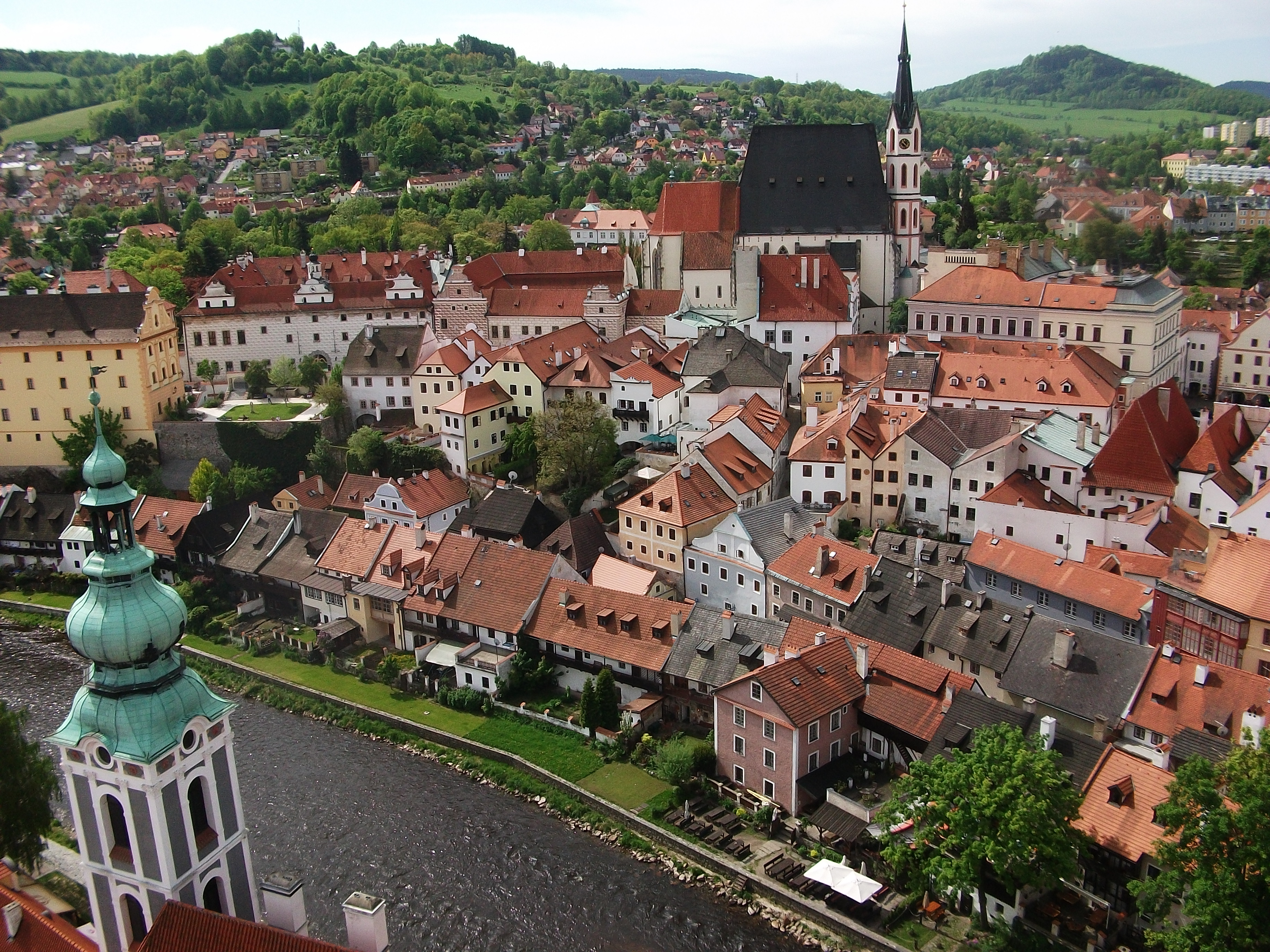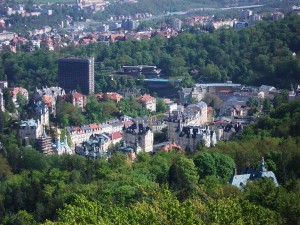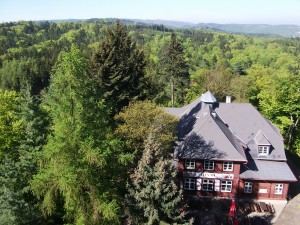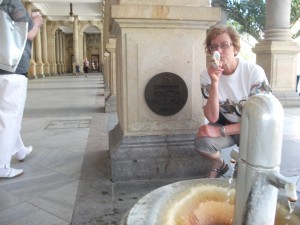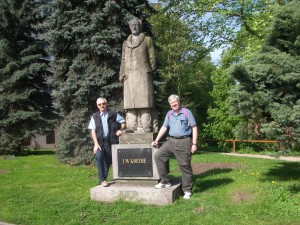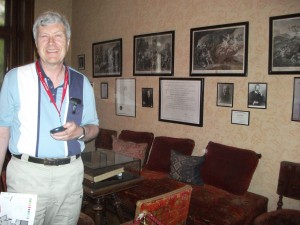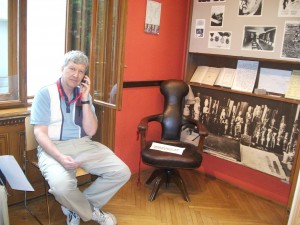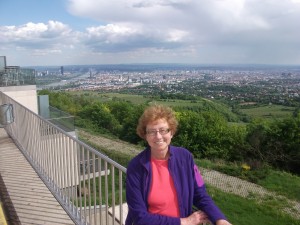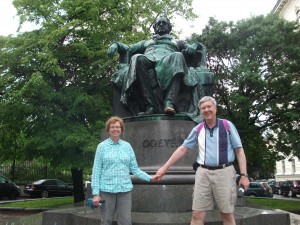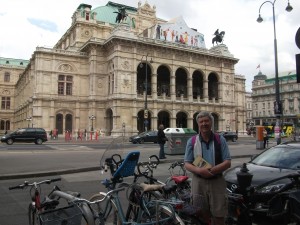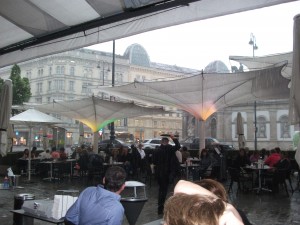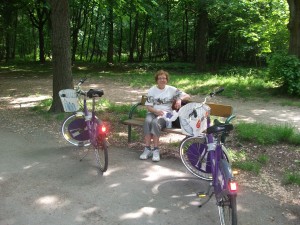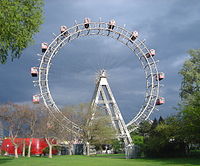During our travels through Austria and the Czech Republic, Will and I were surprised by the numbers of North Americans we met who were including a stop in Cesky Krumlov, which we hadn’t heard of before the trip. Part of this must be due to increased accessiblity. Cesky Krumlov isn’t on train routes, but you can take a bus from Prague and shuttle vans to Vienna and Saltzburg. Years of communist neglect also contributed to its appeal as an historic site. The Czech town’s intact medieval architecture earned it a UNESCO World Heritage designation.

The thirteenth century hilltop castle dominating Cesky Krumlov is the town’s main tourist attraction. We spent a day on the hill and took three castle tours, all offered in English. The castle was built by the Rosenburg family, who owned most of the land in southern Bohemia, the west side of the Czech Republic. When the Rosenbergs died out, the castle and lands passed to the Schwarzenberg family. Ultimately, the communist government took it all and drove the German family out of the country.
Our visit to the castle’s baroque theatre was the highlight of our three tours. Built in 1680 to entertain castle guests, the theatre is one of two such theatres remaing in the world. What makes it baroque, I gather, is the style of stage settings. Scenery pieces move onto the stage from all directions to create assorted locales: a Greek theatre, forest, meadow with gambolling sheep.
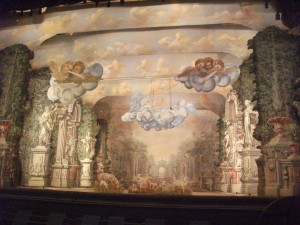
The six of us on the English tour lucked out by getting to tag along an a VIP tour conducted in English. As a result, we were allowed to take pictures and explore the stage. The tour went well beyond its allottted hour. As our guide rushed us to our next tour, she confided she’d been nervous about dealing with the VIPs some of whom, she believed, belonged to the nobility. The country’s former communist leaders must be objecting from their graves to this preferential treatment, even though their elite were equally favoured.
Since we had a car, we stayed in Cesky Krumlov a second day to see more castles and/or hike one of the nearby hills. We managed to do both, barely.
We began the sunny day with a drive through canola fields to Cervena Lhota, a manor house on a rocky island in the middle of a lake. This time our need for an English tour worked against us. Cervena Lhota was too small an attraction to provide an English guide, but they were well equipped with description sheets in multiple languages for us non-Czech speaking tourists to carry with us through the house. Unfortunately, the sheets contained minimal details. We missed a lot of commentary and some pretty good jokes, judging from the laughter of the rest of the group.
From there, we drove to the castle the Schwarzenbergs transformed into their headquarters when they abandoned Cesky Krumlov Castle. Shining white on a hill, Hubloka nad Vitavou was more modern and sumptuous than the previous castles we’d seen. It was also large enough to merit an English-speaking guide, albeit a non-chatty one with no apparent sense of humour.
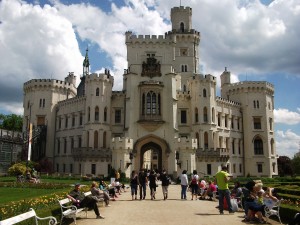
We wanted to stay longer and ramble through the castle gardens, but hoped to catch a chair lift up a ski hill outside Cesky Krumlov. As we arrived at the hill parking lot, an operator rushed over and told us to hurry to the lift. Will rode the last chair of the day up.
At the top, we climbed a tower to a lookout with a 360 degree view of the surrounding countryside.
Hungry after our hike down the hill, we stopped for supper at on a suburban restaurant patio. Inside, a hocky game played on the TV screen. We felt right at home, except our meat was swimming in sauce (Czechs love sauces) and our glass of restaurant beer cost only $2.00.
